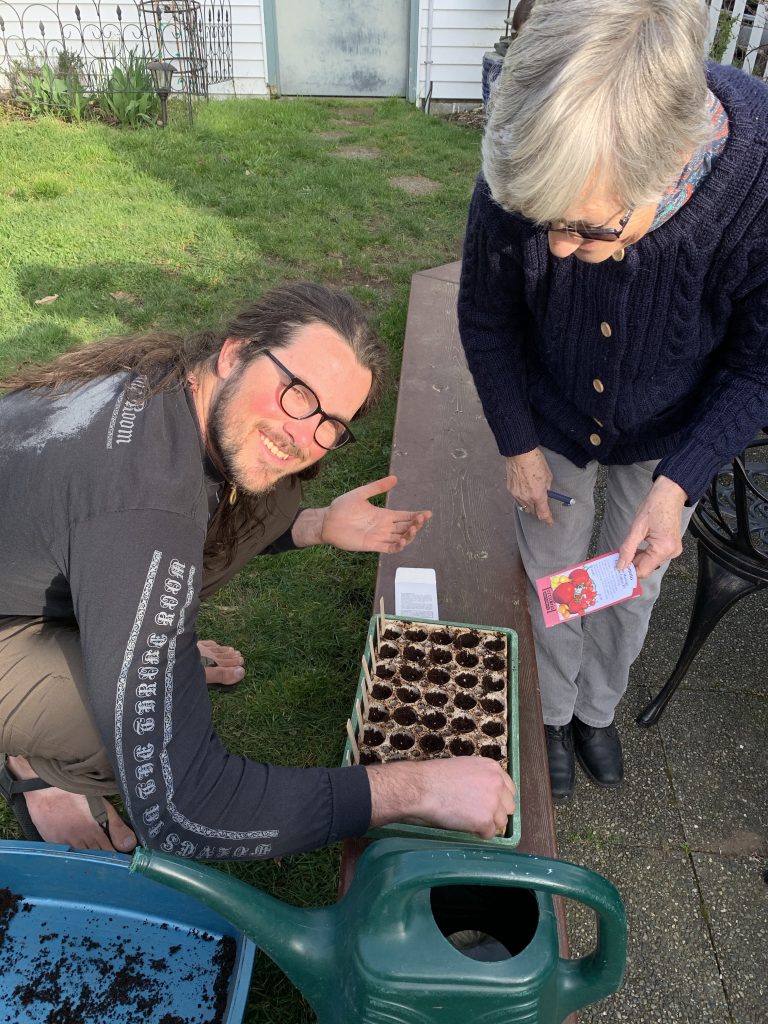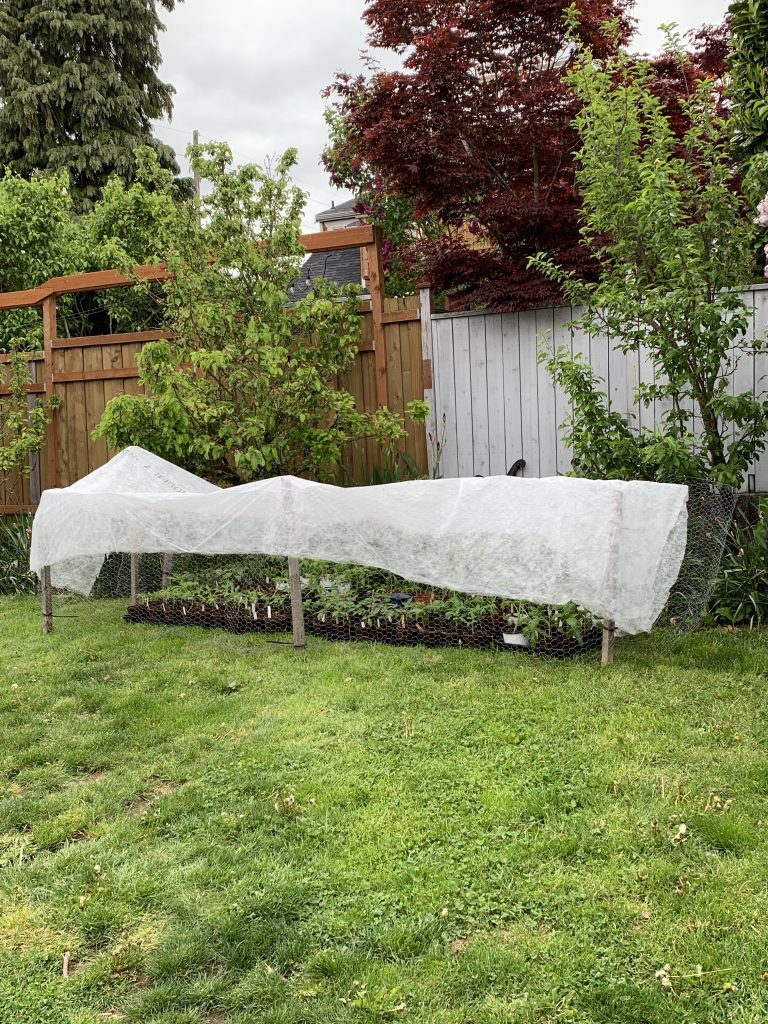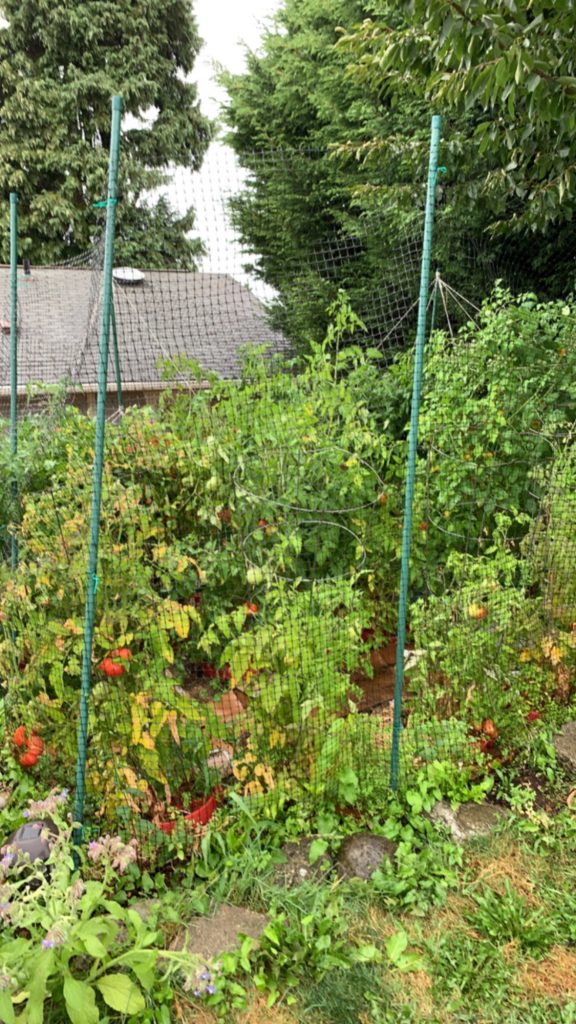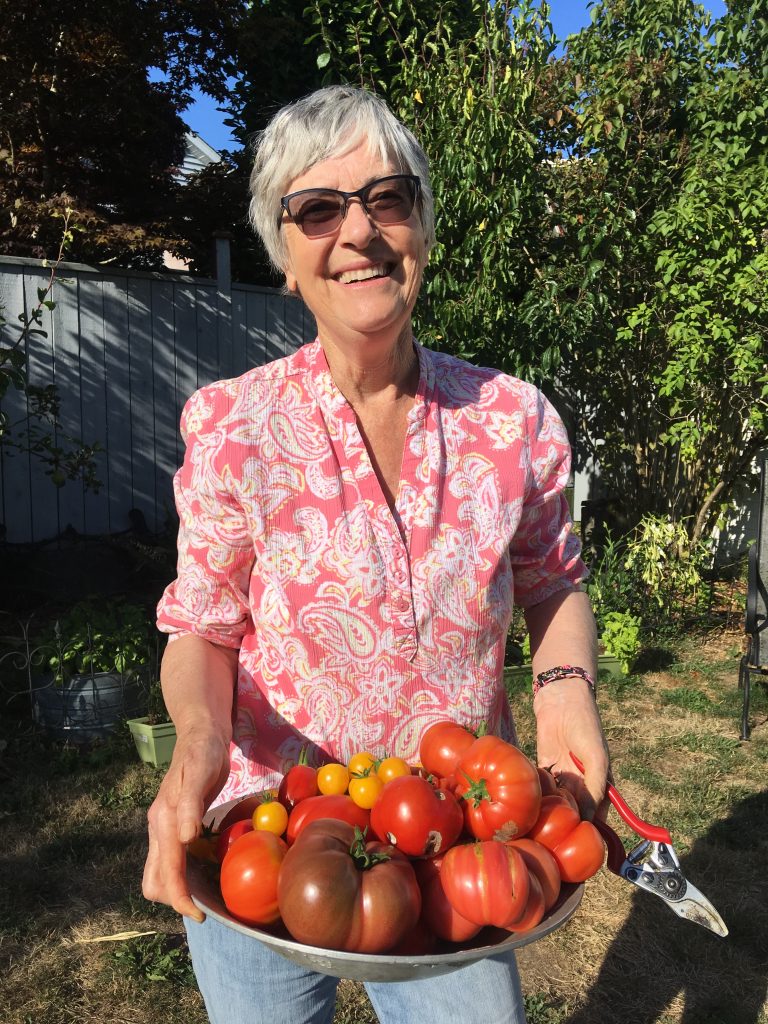by Christine Sine
It is tomato planting season here in Seattle and a couple of days ago, when I posted a tomato photo, novice gardeners had lots of questions for me. As I reflected on this yesterday I realized that some of my advice is probably also good advice for us as we think about reopening our churches now that COVID19 restrictions are being slowly removed. Some of you know that I am a fan of tomato theology and so it is not surprising that now too I am drawing on my tomatoes for advice.

Planting tomato seeds
DON’T PLANT TOO SOON
We all get impatient to get our tomatoes in the ground too early. Plant nurseries in Seattle make a lot of money in May from impatient gardeners who plant too early and regret it.
Are we in danger of doing the same thing with our churches I wonder? Are we so impatient to get back to the old ways of gathering that we we are likely to open too soon and regret it, finding’s that we are spreading the virus before it is contained. Are our plants (congregational members) likely to die just as those early planted tomatoes do because of it?

Hardening off slowly
DON’T PLANT TOO FAST
Tomato plants that have been inside for a long time need to be hardened over several days before they are exposed to the full day of sunshine – otherwise they will get sunburnt or scorched and their growth will be stunted because they are not used to the cold new environment. I move them outside for a couple of hours for the first few days, then 4 for the next few, then six and finally for the whole day.
What about in our churches, are we likely to give our congregations “sunburn” by exposing them too quickly to the light? Do we need the same kind of approach as I have with my tomatoes – small group gatherings for a short period of time to start with, then larger gatherings if everything seems OK and then finally the whole congregations with thenevessary precautions still being taken.
DON’T PLANT TOO SHALLOW
When you finally get to plant those tomatoes you don’t just put the part of the tomato in the ground that was moved by soil in the pot, you put as much in the ground as possible because the part that has been exposed will grow new roots and give you a much sturdier plant. We usually place them on the side and cover the first few inches with soil. Your plant may not look as big but it will be much happier and healthier.
So what is the equivalent in our churches you may wonder? Well I think that we need to “plant” congregational members in such a way that they are able to put down strong and supportive roots in the new soil. The world that we are all emerging into is different from the world we left behind. How much of the “old growth” in our lives needs to be buried so that the new plants that emerge can grow healthy and strong?

Growing well
SUPPORT WELL FROM THE START.
We put up tomato hoops whenever we plant our tomatoes. Wait even a week and they are hard to get around your plants. We also put down a watering system. We have learned from experience that this too is much harder to thread through our tomato patch if we don’t put it down on planting day.
Maybe it is something we need to consider in our churches too. What kinds of support will your congregations need – support for dealing with anxieties, PTD, ongoing fear and the loss of loved ones as well as the economic realities of lost jobs and investments, new dynamics in the work place and the possibility a deep recession? Do you have health care workers and hospital cleaners, grocery staff, farmers or delivery people in congregation who may have special needs? What kind of support will church leaders need? We will not be the same either. We will need support, healing and encouragement as we move forward.
WHILE YOU ARE WAITING BUILD UP THE SOIL.
Novice gardeners think that all they need is a good bag of potting soil, some compost and some fertilizer, all put together on the same day they plant. And there is some truth in this, but the tomatoes will be much healthier if the soil has been built up over a period of time. Tomatoes like rich soil with lots of compost. Make sure you use the right fertilizer though. Too much nitrogen means lots of great green growth but it could mean much less fruit. There are other things we need think about too. Tomatoes need bees to pollinate them – less bees mean less tomatoes, so we don’t just need to work to build up the soil that we are planting them in, we also need to build up the surrounding garden which hopefully has lots of flowers that attract the bees that will pollinate your tomatoes.
Wow, now this topic I could talk about for ages when I think of our churches. This is not just the time for streaming worship services on Sunday, it is a time for “building up the soil”, the community in which each person is planted and for adding plants or connecting to other congregations that can provide the pollinators that will be needed for the future.
Part of what our church response to COVID-19 has forced many of us to do is to form collaborations with other churches and organizations that have resources and “pollenators” that we lack. This is a good time to identify these and to nurture and strengthen the relationships that you will need in the future.

Anticipate the harvest
WHAT IS YOUR RESPONSE?
As I write this for you to prayerfully consider, I must remind you (full disclosure!) that I am not a pastor, though I do interact with people from a lot of churches and am concerned that our approaches to reopening will cause casualties, not just because we try to bring people together too close too quickly, but also because we forget that our people are not the same as they were before this all began.
So what is your response?
- What kind of preparation do you think is necessary before we reopen our churches – for you and for your congregation?
- What special needs are members of your congregation likely to have?
- What kinds of ongoing discipleship and faith formation do you think will be most effective in the months ahead?


3 comments
I’m a member of the laity and serve in my home parish as a lector, Eucharistic minister (serving wine), and occasional lay preacher. Our town draws retirees and the congregation’s average age is probably 60 or more. On the one hand, I know that people are tired of Zooming and long to be together again. At the same time, there’s a great deal of caution and even fear about reopening. We will need clear, consistently maintained protocols for sanitation and safe distancing in our meeting spaces, communicated to the congregation in more than one way (e.g., snail mail, the newsletter, special separate email) before we meet together again.
Good points, I think we are seeing some of this now- in July, though you wrote this back in May! I think there is a huge resistance and failure to acknowledge much of what you are pointing out here…thanks for sharing.
Thanks Dawn. I know I am not the only one who has been suggesting these kind of steps but it is disheartening to see so many churches not listening to these kinds of suggestions.